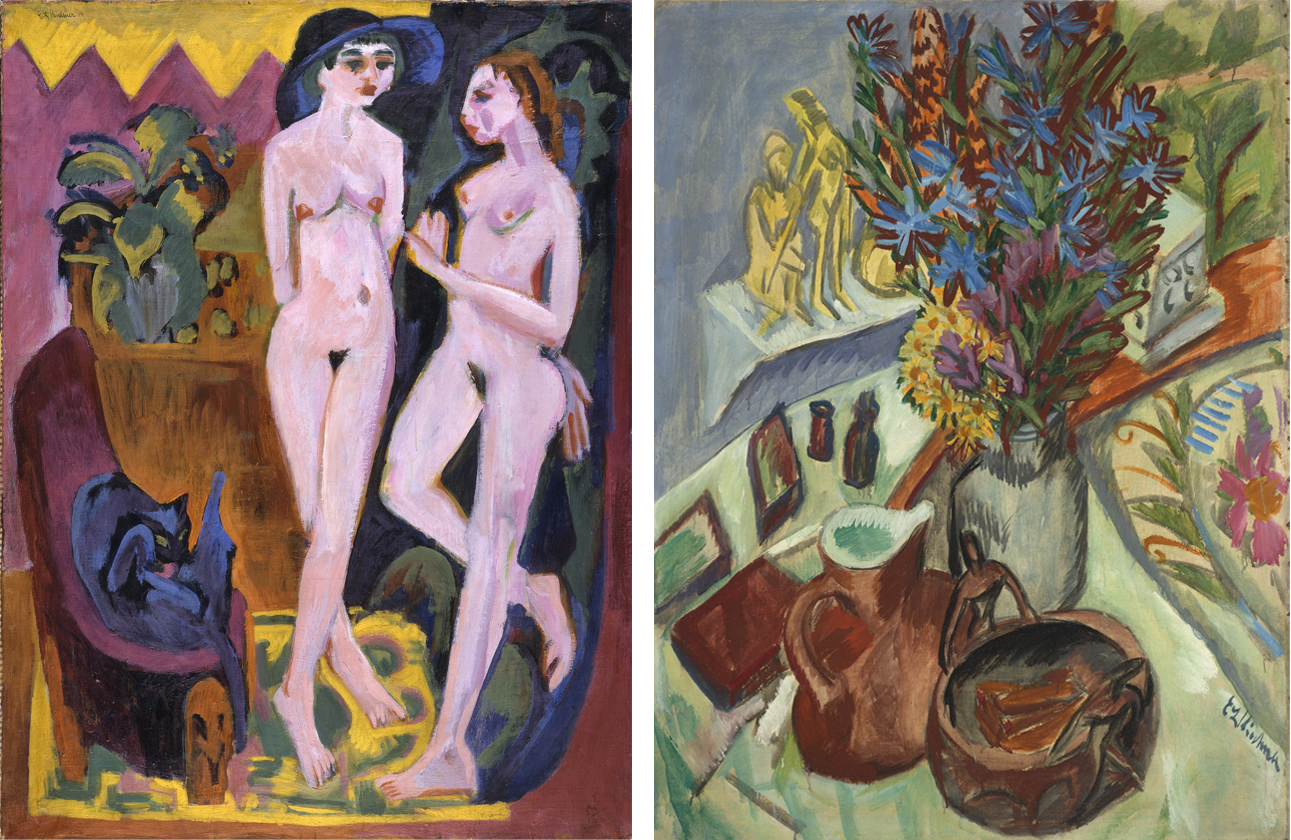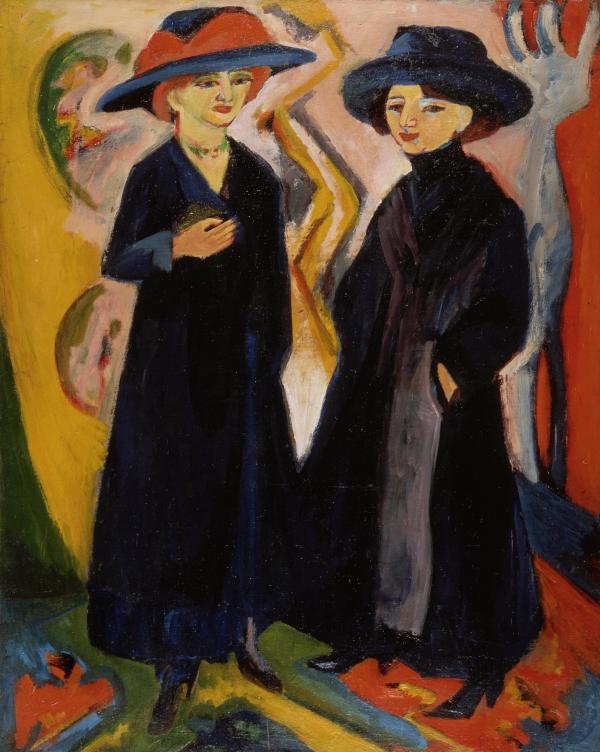Ernst Ludwig Kirchner’s Two Women (1911–12/1922) sits invitingly in the Modern Art Galleries at LACMA, a beguiling window into a turbulent period of history. Kirchner (1880–1938) shows us two figures rendered in stark, thick lines amid vibrant splashes of color. Their identities are indistinguishable, except for perhaps in their dress and stance. We are left to assume these individuals are in transit, most likely in an urban environment. They emerge from their anonymous surroundings, at once evoking both the rapidity and anonymity of modern urban life. Such is the world of Kirchner’s Berlin, the artist's group Die Brücke, and their self-dubbed movement, “German Expressionism.”
German Expressionism exposes to us a self-conscious society of intellectuals and artists decisively forging a path forward based in a new urban identity, inspired by the changing world around them. Previously revered in European art, naturalism as a mode of depicting life was found to be insufficient when trying to capture the excitement and anxiety of the modern, 20th-century city. In bold forms, flashes of color, and the use of geometric shapes in composition, they found an art that portrayed their newfound interiority. Like many artists before them, when faced with rapid technological advancement, members of Die Brücke and other German Expressionists strove to forge a new way of seeing, and thus a new identity, in relation to the growth of urban environments.

In the 21st century we are no strangers to the certain anxiousness that accompanies advancements in technology. Recent developments in the fields of artificial intelligence, for example, pose new questions for our society. Perhaps our artists will find a new sense of identity and expression that reflects our hopes, our concerns, and our joys.
Two Women and other works by Kirchner are now on view in the Modern Art Galleries in BCAM, Level 3 (ongoing).
View this post on Instagram



